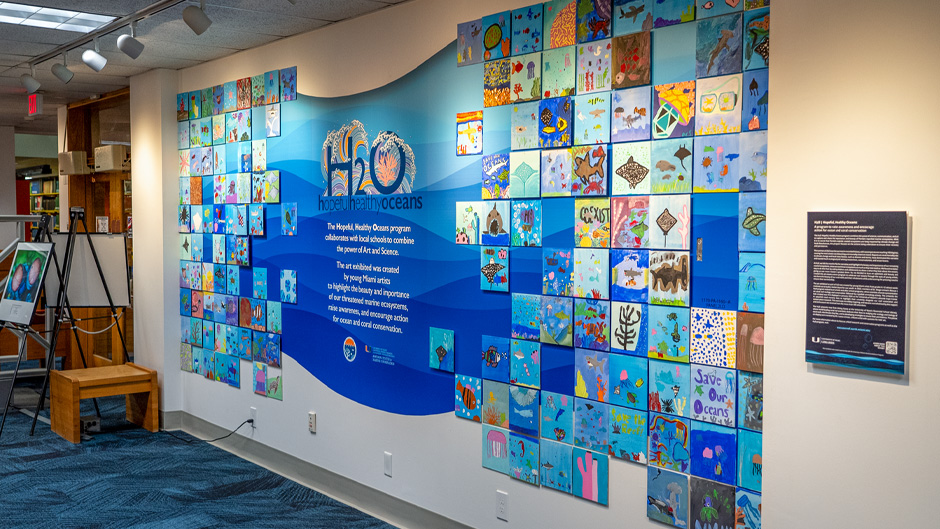Amid record-breaking coral bleaching, a University of Miami-based program emulates children's creativity to inspire hope and action for Florida's endangered marine ecosystems.
The Hopeful, Healthy Oceans (H2O) program, led by Diego Lirman, associate professor of marine biology and ecology at the Rosenstiel School of Marine, Atmospheric, and Earth Science, integrates science and art to address Florida’s coral reef crisis and showcase it in a different light.
The summer of 2023 saw record-breaking sea temperatures, leading to the most severe coral bleaching event ever documented. Faced with this urgent environmental challenge, Diego Lirman and Laura Lirman, who curated the exhibition, recognized the need for a fresh strategy to communicate the significance of coral reef conservation.
They designed the H2O program to combine science and art and to engage young people in creative activities so they could inform and inspire action to protect Florida’s endangered marine ecosystems.
“The idea was to change the negative narrative regarding coral reefs,” said Diego Lirman. “What’s a better way to change the narrative than merging science and art to project a positive outlook, and there is no better way to do that than through the eyes of kids.”
The H2O program engages children from underserved communities across Miami. In late summer and fall of 2023, they visited 12 different groups. They ended up with a couple of hundred canvases currently showcased at the H2O exhibition at the Rosenstiel School Library in Virginia Key.

The program begins with educational presentations on marine biology and coral reef conservation. After learning about the importance of coral reefs and the threats they face, the children participate in art-making activities where they paint their favorite marine animals.
Throughout this initiative, University undergraduate and Ph.D. students have played a key role in the program. These students are leading educational sessions and art activities. The experience not only enriches the children’s understanding of marine science but also provides valuable training for University students in science communication and community outreach.
“The most rewarding part is seeing the art that the kids can create. They are quite attentive during our presentation and do a great job of encapsulating the fleeting beauty of a threatened ocean,” said Massima Ponce, a sophomore studying marine science and biology. “I personally love emphasizing that they are our future leaders. Every one of them has the power to make a change, so they should go forth into the world and be the ones who make a difference.”
“There’s something special about learning from someone closer to your own age,” Diego Lirman said. “The kids connect with our students in a way that’s both impactful and inspiring. It’s a powerful exchange where both groups learn from each other.”
The program’s kickoff event took place last January at the Lakeside Expo Center on the Coral Gables Campus, where more than 400 attendees viewed the children’s artwork. The pieces were displayed on upcycled coral nursery trees, visually linking the art to ongoing reef restoration efforts.
With much work done, the program is far from over. In fact, Diego Lirman hopes to expand the initiative to other venues and festivals, reaching an even broader audience.
“We need to expand our audience; but sometimes you could be missing a key demographic,” said Diego Lirman. “Doing it from the bottom up is very powerful because parents listen to their kids. We hear from interactions that parents are learning from their kids.”
The H2O exhibition will host its opening event on Sept. 12, inviting University students, faculty and staff members to view the exhibition and learn more about the program. This exhibition will be open through fall 2025.

